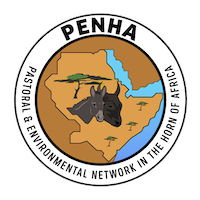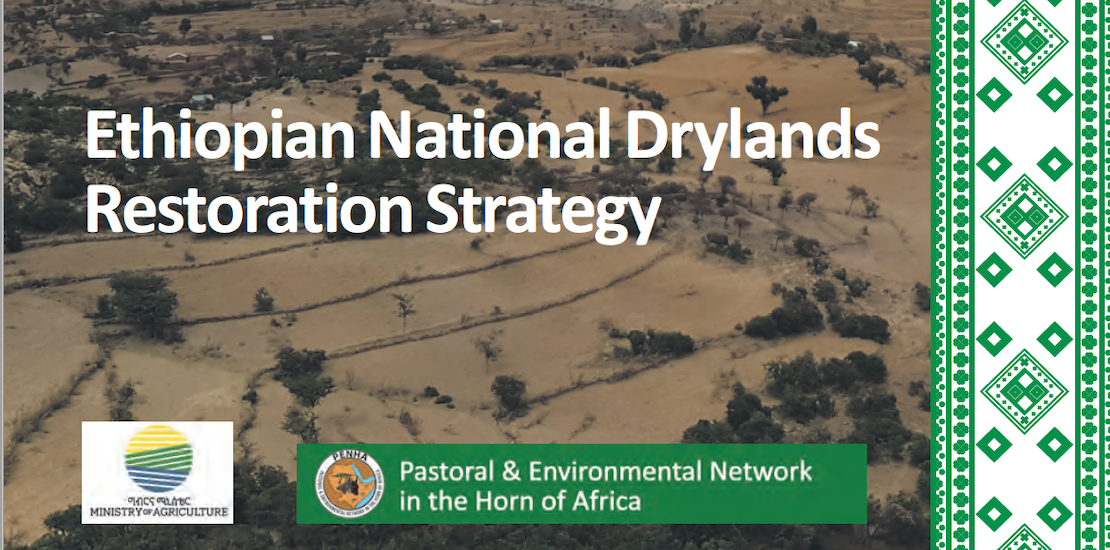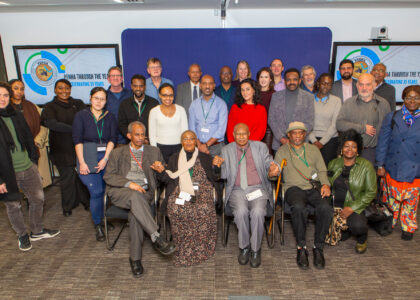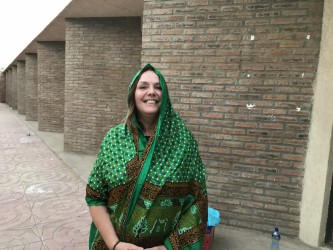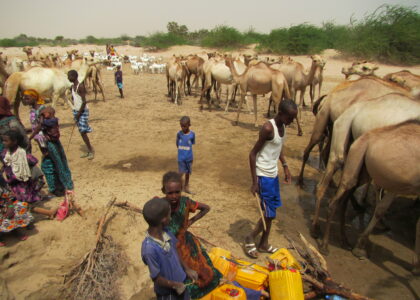The new Ethiopian Drylands Restoration Strategy is released. To download the strategy, please click here.
The Ethiopian Dryland Restoration Strategy
The Ethiopian Dryland Restoration Strategy is a landmark document that provides the basis for the development of these vast and previously neglected areas. It opens with messages from H.E. Prof. Eyasu Elias State Minister, Ministry of Agriculture, and H.E. Ato Kebede Yimam, Director General, Ethiopian Forestry Development. Guiding principles, scope and rationale set the scene, before the strategy is laid out under four main themes – (i) natural resource management; (ii) land tenure, community rights and governance; (iii) livelihoods, markets and value chains; and (iv) policy alignment and coordination. This is followed with details on coordination and implementation arrangements, financing mechanisms, and monitoring, evaluation, accountability, and learning.
The Ethiopian Dryland Restoration Strategy must now be adopted by the governments of the regions, adapting it to the specific context and conditions that each face. Once endorsed at Regional level, it will then be cascaded down to district level where it will guide actions on the ground.
As the first step, the strategy has already been presented at meetings in Afar, Oromia and Somali Regional States, with feedback being received on how to best contextualize, this is now being incorporated. The same process will be conducted in early 2023 in Amhara, Benishangul-Gumuz and Tigray Regional States.
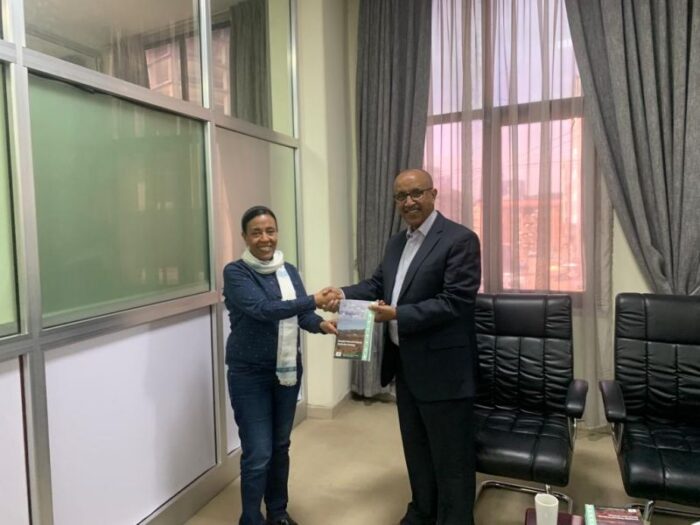
Amsale Shibeshi of PENHA, presents a copy of the Ethiopian Dryland Restoration Strategy to Ato Tilaye Nigussie of Ethiopian Forestry Development. Ethiopians from across key regions and at all levels, had together produced this strategy that will guide the development of drylands throughout the country.
And what has been quite remarkable, is that this has been done in less than two years, a period that coincided with major conflicts in the country, the Covid-19 pandemic, and one of the worst droughts in the region’s history.
The process began in April 2021 at a major national workshop (Agreement in Addis Ababa, on a declaration towards an Ethiopian dryland restoration strategy – Tropenbos International), and that was followed by the formation of a national platform and task teams, involving a range of organizations across the six main dryland regions of the country. They met many times throughout 2021, sometimes in difficult circumstances, but this did not impact their commitment. By the end of the year, a major 160 page book on Ethiopia’s drylands was also published (Dryland restoration and dry forest management in Ethiopia: Sharing knowledge to meet local needs and national commitments – Tropenbos International).
In February 2022, the draft dryland restoration strategy was formally endorsed during a national validation workshop (A new Ethiopia national dryland restoration strategy is endorsed – Tropenbos International). It was approved by members of parliament from the Pastoral Affairs Standing Committee, state ministers and representatives of key ministries and of seven dryland regions (including those with significant areas of drylands). The Ministry of Planning (MoP), which has responsibility for coordination across sectors, will play a key role in implementation. The Ministry of Irrigation & Drylands (MoID) has specific responsibility for the pastoral drylands, and the Ministry of Water & Energy (MoWE) is another essential partner.
Now, after some months of discussion over the details and how this will be operationalised, including significant further reviews, the strategy is finally ready for publication.
Ethiopia, and its drylands
With a population of more than 105 million people, Ethiopia is the second most populous country in Africa, and 13th in the world. One in every 80 of all humanity is an Ethiopian. It is also very proud of its rich cultural heritage and the diversity of its many ethnic groups. It is governed by a federal government including its Regional States. Ethiopia has a land area of 1.1 million square kilometres, making it the 26th largest on Earth, more than 70% of which is classified as dryland. Much of this occupies the lowlands in the east and southeast, but there are also ‘the drylands in the highlands’. The Ethiopian drylands thus cover some 80 million hectares, and are home to some 50 million people, and implementation of this strategy has the potential to have positive impacts for many of them, most of whom are poor pastoralists and agro-pastoralist smallholders.
Gifts are presented by the President and representatives of Afar Regional State and government to John Livingstone and Amsale Shibeshi of PENHA, after the presentation of the national strategy in Samara, Afar’s capital, 27 November 2022
Development of this strategy was coordinated by the Pastoral and Environmental Network in the Horn of Africa (PENHA), supported by CIFOR-¬ICRAF and Tropenbos International, with substantial contributions from many Ethiopia experts gratefully acknowledged, especially: Habtemariam Kassa (CIFOR), John Livingstone (PENHA), Niguse Hagazi (ICRAF), Demeke Tsehay (MoPD), Abeje Eshete (EFD), Abbadi Girmay Reda (TARI/MoA), Habtamu Hailu (MoA), Amsale Shibeshi (PENHA), Kidane Giorgis (consultant) and Mitiku Haile (Mekelle University).
This was made possible thanks to financial support from the Ministry of Foreign Affairs of the Netherlands, through the Working Landscape programme of Tropenbos International.
This news item first appeared on the TBI website.
